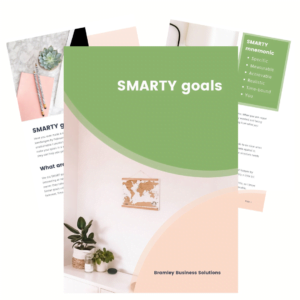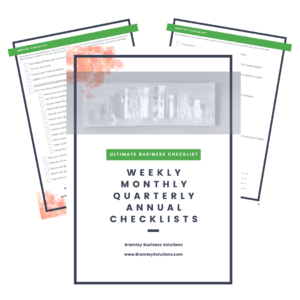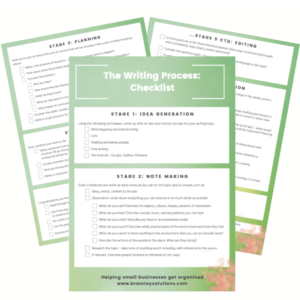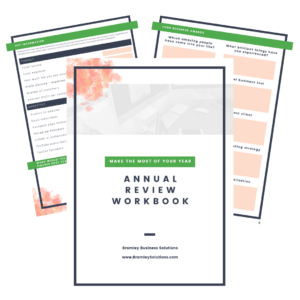Business process documentation provides a detailed description of how to carry out your business processes so that the result is accurate and desirable, every time. Yes, small businesses should definitely do it. In this article we discuss why, what process documents look like, and how to create your own.
As an example, Sarah took some time to create business process documentation for her coaching business. She says:
My Business Operations Manual has put organisation and structure into the daily, weekly and monthly running of the business. I now have a working document which means I don’t have to hold everything in my head! This makes much more room for creativity in growing the business and focusing my energies on helping my clients.
Sarah Weller, The Weller Way
Why create process documentation?
- Increase your profitability. Profitability is the difference between the amount earned and the amount spent in buying, operating, or producing something. Therefore, if you decrease time spent running your business, without decreasing quality, the more profitable it will be.
- Reduce stress. You have enough going on in your head without having to remember exactly how to do everything within your business. Free up some of your mental hard drive to focus on the bigger picture of your business.
- Increase your productivity. Documenting your processes makes you very aware of them, that they have evolved over time. It gives you the opportunity to design them, removing inefficiencies. It also means you don’t have to reinvent the wheel whenever a less regular task comes up. Less time spent on an activity means you can get more done in the same available time.
- Outsource effectively. You love your business, you do it exactly with the best quality and service for your customers. Handing jobs over to other people… What if they don’t do it as well? What if you lose customers? Your reputation? Documenting how you deliver your amazing service/marketing/bookings means that when you give it to someone else, they know exactly how to replicate what you do. They’ll also be using their time efficiently (see point 3) saving you more money (see point 1), and they’ll feel more satisfied working for you as it will be easier for them to do a good job.
- Improve quality of your work. With process documents there are no steps forgotten, consistently producing excellent and reliable results, for that your client journey, marketing activity, or finances.
- Preserve knowledge. Someone leaving a small company can be devastating due to the amount of knowledge and experience they have. Your favourite freelancer taken a role as an employee? Document how they do their job so wonderfully, then you can show someone else to do it brilliantly too.
- Automation. Knowing your processes means you can search for opportunities to automate steps, saving even more time. What are you going to do with all this new time you have?
What does process documentation look like?

Small business process documents can take many forms, depending on the preference of those involved. Some options include:
- Word documents
- Manuals
- Flowcharts
- Kanban boards (e.g. Trello or Asana)
- Task programs
- Process-specific programs (e.g. Notion)
- Design them in Canva or Photoshop
- A combination of any of the above
As long as the information you need is included, you can present them any way you like – the choice is yours.
How to document a process
Process documentation doesn’t have to be a massive project; you don’t have to document your whole business process. Just do one process within your business: which activities cause you stress? Which jobs are you thinking of outsourcing? Where do you spend your time, which could be used more valuably?
To document a process, write down how you do what you do. Try the steps below to take you through this:
- Figure out which process you are going to document first, and where it starts and ends (running a small business can essentially run into one long process!)
- Mentally go through the process writing down each step, in order. For each step, consider:
- When does it need to be done?
- Who is involved?
- What resources are necessary?
- This is a great opportunity to look at how you do things, and if they can be improved. Why do you do this task in this way? Is there a better way? If so, write down how you would like to do each activity going forward.
- Use your notes to create your process document in whichever format you will find most useful. Keep it concise and simple – while it should be technically accurate, it needs to be easy to follow.
- Test the process – did you miss anything? Can it be improved further?
- Use your process to establish where it would be useful to create templates to save making the same documents from scratch over and again.
For more information on creating your own process documentation, see another of our other blog articles here
Create process documentation for your business and experience the benefits!
If you’d like to receive our weekly email with tips and articles for small businesses, please sign up below:





